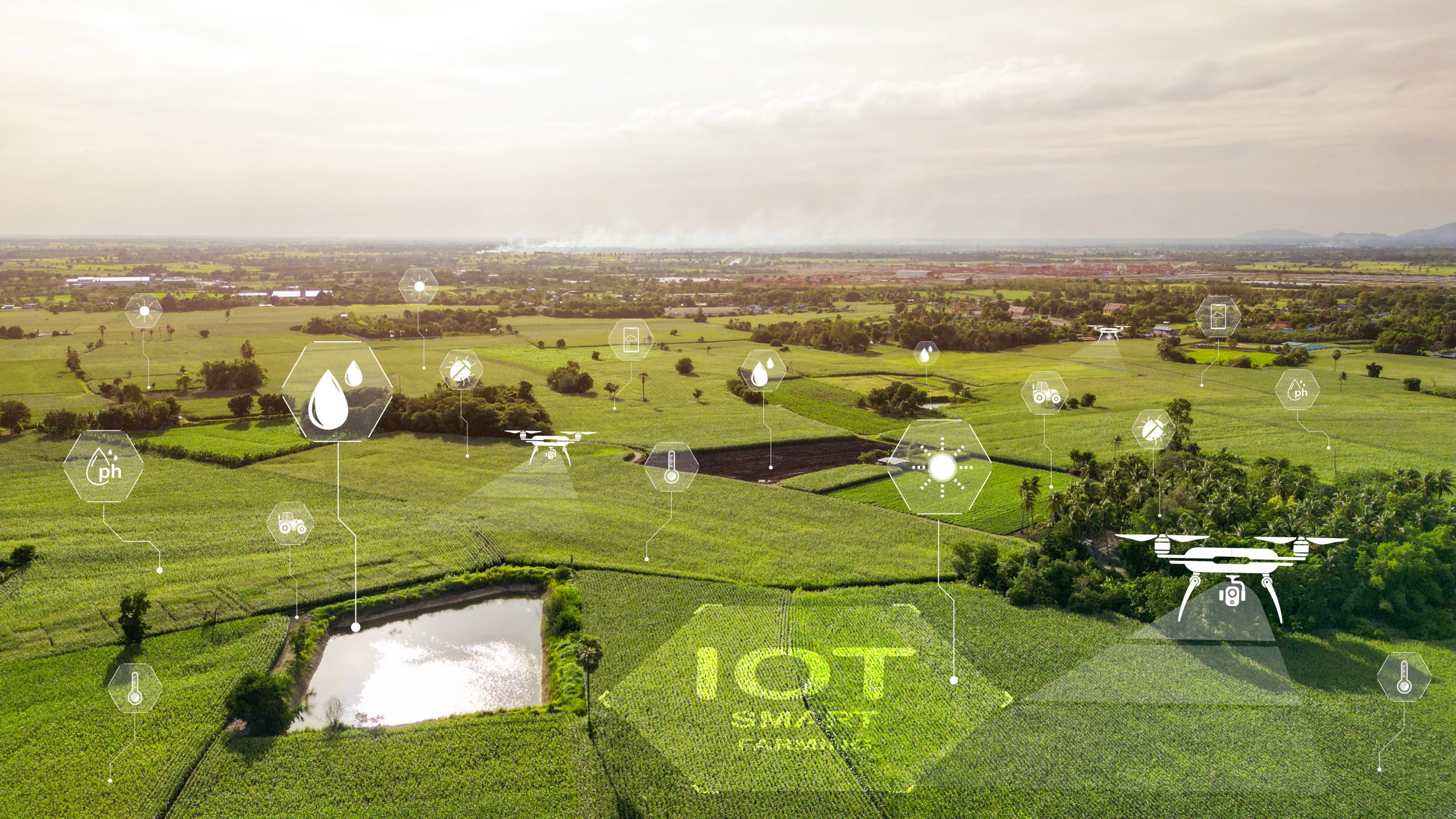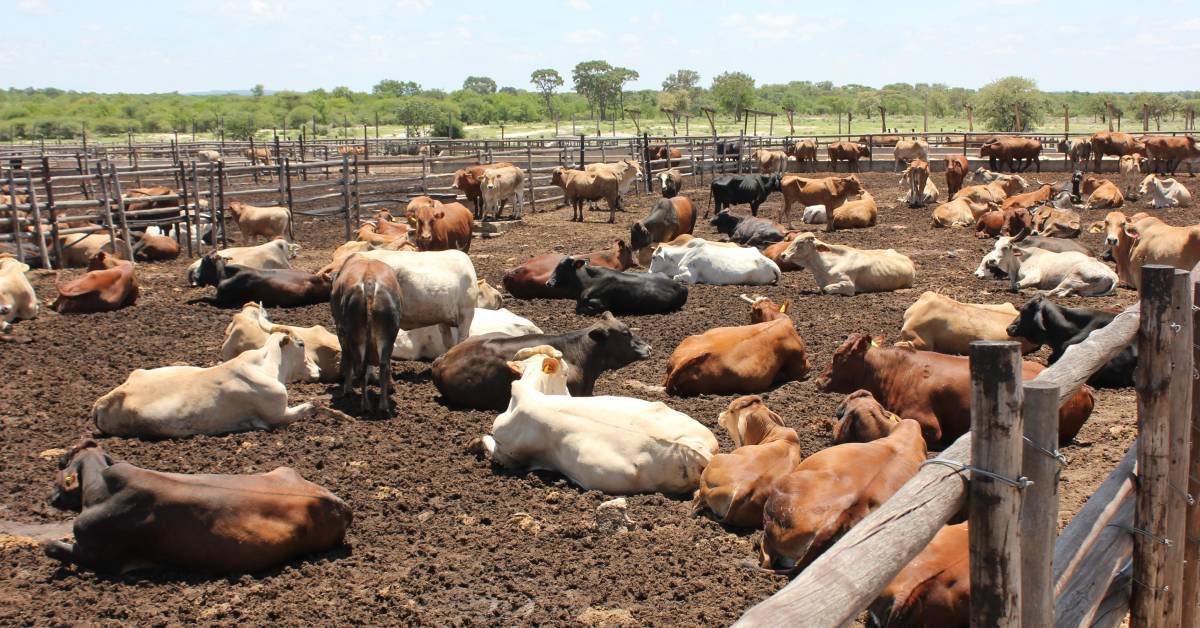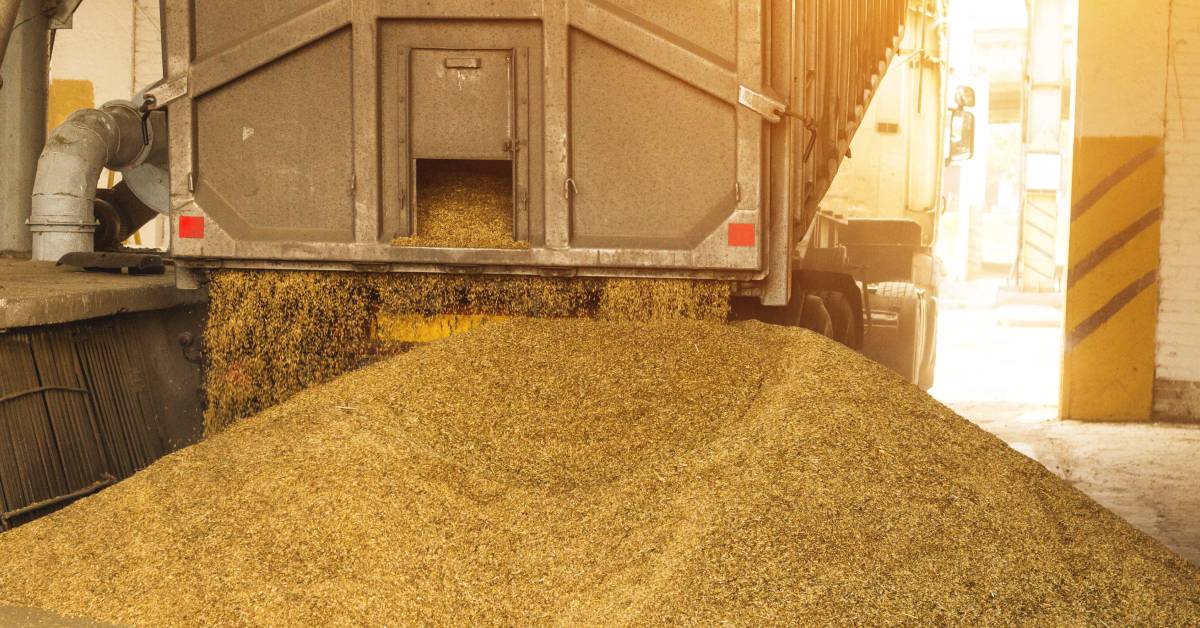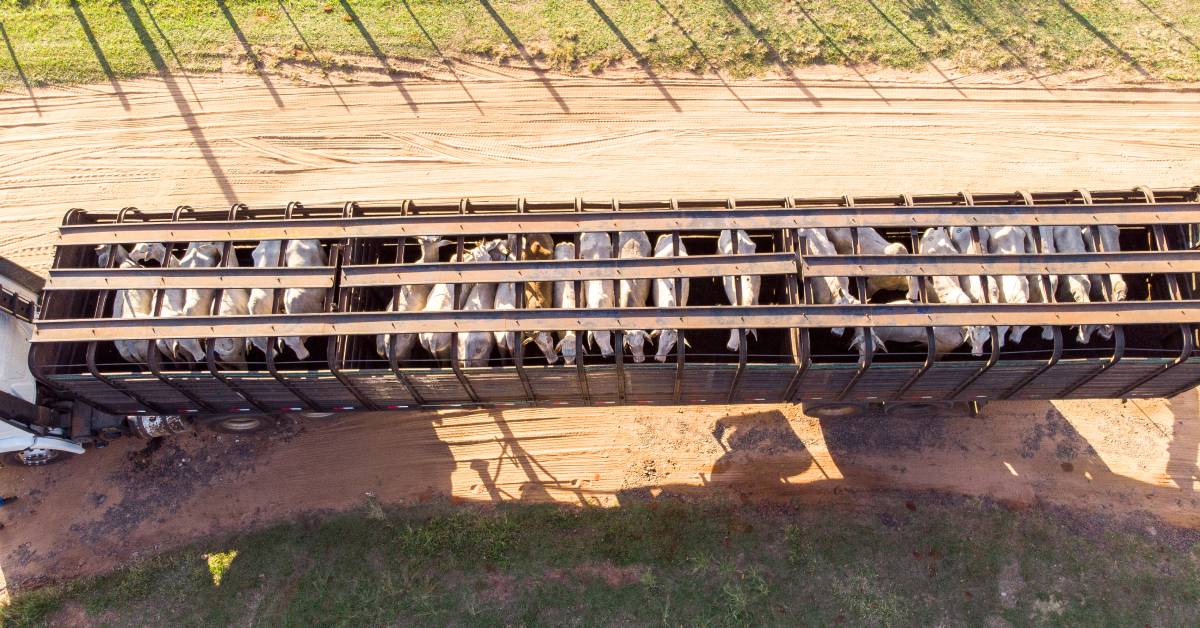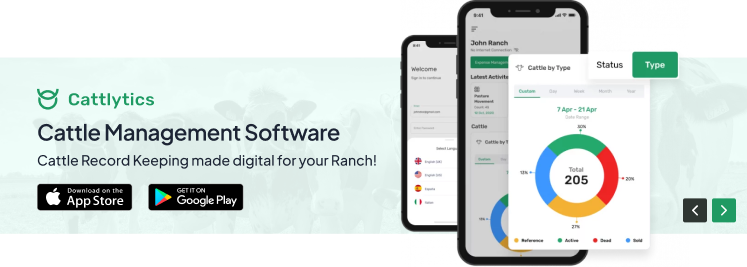As the global population steadily rises, so does the pressure on agriculture to meet the escalating demand for food. Experts predict that by 2050, farmers will need to produce 70% more food to keep pace with this growth of 9.1 billion global pollution.
However, limited agricultural resources, environmental concerns, and the need for increased productivity make this a daunting challenge. That’s when IoT comes in —it’s a technology that offers precision, efficiency, and sustainability in farming.
Integrating sensors, AI, and IoT in agriculture is reshaping how we grow crops and raise livestock, allowing for smarter farming practices that optimize resource use and minimize environmental impact.
IoT solutions help farmers monitor crops and livestock in real time, optimize resource usage, and reduce waste, helping to ensure a secure and sustainable food supply for the future. Keep reading this blog to learn more about how IoT in agriculture works.
What is IoT in Agriculture?
IoT in Agriculture uses Internet of Things (IoT) technology to revolutionize traditional farming methods by connecting devices, sensors, and equipment through the Internet. This allows farmers to collect real-time data, monitor operations remotely, and automate processes for improved efficiency, sustainability, and productivity.
IoT in agriculture enables smart farming practices, where various aspects of farming, such as soil health, crop growth, livestock monitoring, and equipment management, are optimized using interconnected devices. Integrating IoT technology helps farmers make data-driven decisions, resulting in better resource management, reduced waste, and enhanced yields.
Key Components of IoT in Agriculture
- Sensors: IoT sensors monitor soil conditions, crop health, weather patterns, and livestock, providing valuable data that can be analyzed in real-time.
- Drones: Used for crop monitoring, spraying, and soil analysis, drones provide a bird’s-eye view of large farm areas and help farmers make informed decisions.
- GPS-Enabled Devices: GPS technology helps farmers with precision agriculture by guiding equipment like tractors and harvesters, ensuring accuracy in planting and harvesting.
- Automated Machinery: Self-driving tractors and robotic systems automate tasks such as planting, irrigation, and harvesting, reducing labor costs and improving operational efficiency.
How IoT in Agriculture Improves Smart Farming? – Role of IoT in Agriculture
Smart farming uses IoT solutions to transform crop farming and animal husbandry by collecting real-time data, automating processes, and enabling precise decision-making.
IoT devices and sensors are critical in monitoring machine performance, environmental conditions, livestock health, and resource consumption. These technologies reshape agriculture by helping farmers maximize yields, reduce waste, and enhance efficiency.
Incorporating IoT in agriculture supports data-driven insights, enabling predictive analytics for crop growth, soil health, weather conditions, and animal well-being. As a result, farmers can make informed decisions to ensure optimal resource allocation, mitigate risks, and streamline farm operations.
Key Benefits of IoT in Agriculture
Here are some other benefits of smart farming technology in agriculture:
- Real-time data collection for better decision-making: Farmers receive live updates on weather conditions, soil moisture, and livestock health.
- Predictive capabilities: IoT sensors predict equipment failures, crop yield potential, and animal health issues, allowing for timely interventions.
- Cost management and waste reduction: Automated resource allocation reduces labor costs, water consumption, and pesticide usage.
- Enhanced productivity: Automated irrigation, fertilization, and pest control systems ensure consistent and optimized crop production.
- Environmental sustainability: Precise application of resources like water and fertilizers minimizes their environmental impact, reducing the farm’s carbon footprint.
IoT Applications in Agriculture
IoT applications in agriculture span across various areas, ranging from crop management to livestock monitoring. These technologies support large-scale farming, family-owned operations, and organic farming practices. Here are some key IoT applications that are reshaping the future of agriculture:
1. Agricultural Drones
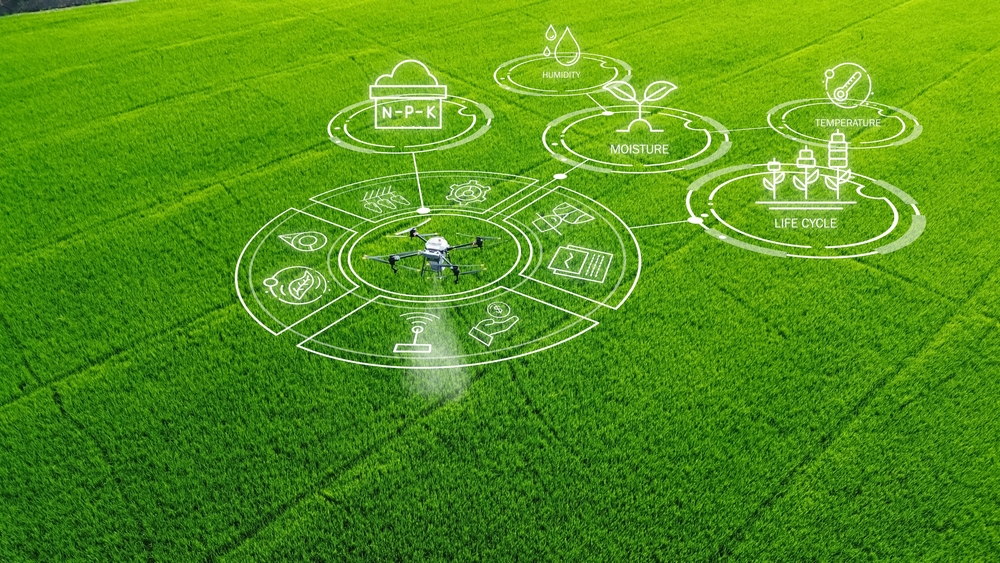
Agricultural drones represent a significant leap in technological advancement within farming. These drones are transforming numerous agricultural tasks, including crop health assessment, irrigation management, crop spraying, field and soil analysis, and planting.
Drones provide farmers with accurate, real-time data, allowing them to monitor large-scale acreage effectively. Unlike traditional satellite imagery, which is often expensive and lacks accuracy, drones in agriculture offer detailed, cost-effective views of farms, eliminating the guesswork in identifying issues like pest infestations or water stress.
Additionally, drones assist in creating GPS maps of crop areas, assessing plant health, and determining crop lifecycles. Benefits include:
- Real-time mapping and surveying of large-scale farms.
- Detailed analysis of crop health, lifecycle, and growth patterns.
- Precision spraying of pesticides and fertilizers.
- Drones eliminate guesswork, making it easier to make informed decisions based on real-time data.
2. Precision Farming
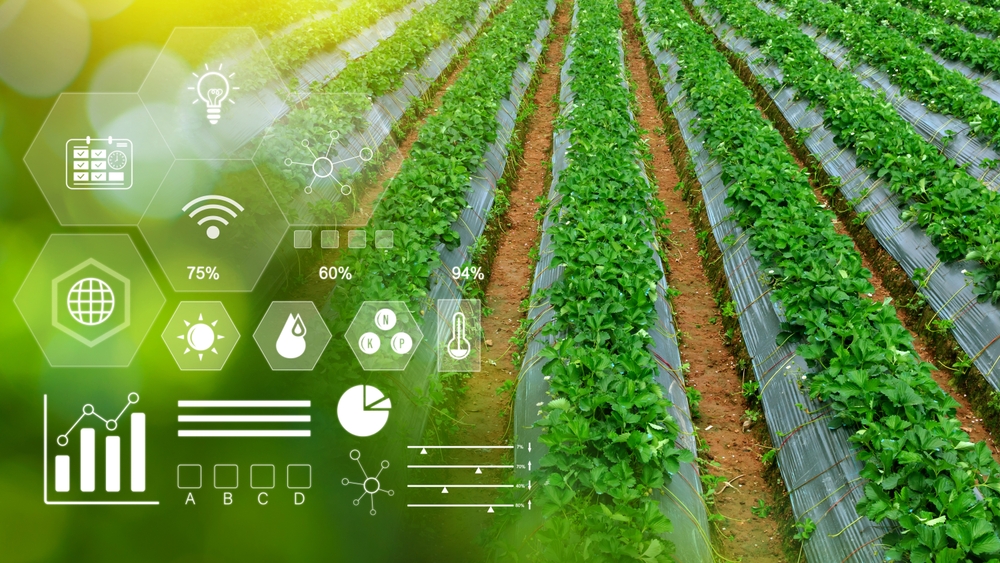
Precision farming relies on IoT, sensors, and GPS technology to provide accurate data on crops and livestock. This method helps farmers monitor soil health, adjust irrigation, and control pests with pinpoint accuracy, reducing waste and optimizing resource use. Farmers can collect data to create custom strategies for each field, optimizing growth and maximizing yield.
3. IoT for Livestock Monitoring
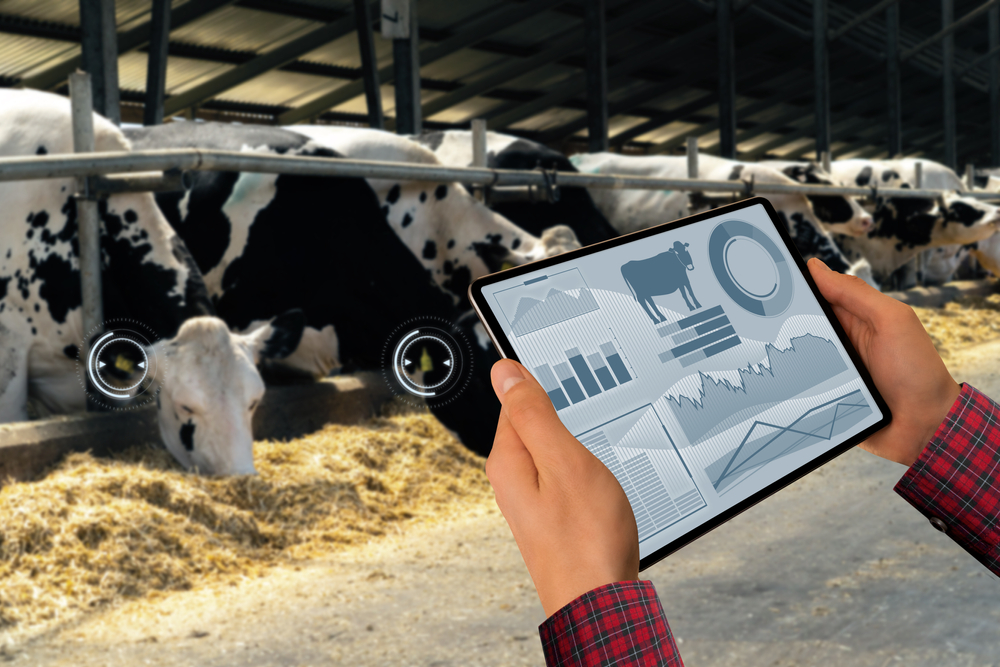
IoT has also made significant strides in livestock monitoring. With the help of sensors, wireless devices, and livestock management software solutions, farmers can now monitor their livestock’s health, location, and well-being in real time.
These sensors collect valuable data on an animal’s vital signs, movement, and behavior, enabling farmers to detect health issues early and provide necessary care before a problem escalates. To maximize these capabilities, utilizing the Internet of Things software development services can enhance the integration and functionality of these systems, providing farmers with even more precise and actionable insights into the health and management of their livestock.
Wireless Livestock Tracking
Large farms benefit from IoT-based sensors that monitor livestock location, health, and behavior. By tracking vital signs such as heart rate, temperature, and activity levels, farmers can detect early signs of illness or stress, enabling prompt intervention. IoT also minimizes labor costs by automating livestock monitoring tasks.
- Early detection of diseases prevents potential outbreaks.
- Automated tracking reduces reliance on manual labor.
- Real-time health updates ensure the well-being of animals.
Smart Animal Care and Feeding Systems
IoT solutions optimize animal care by monitoring nutrition, feed quality, and water levels. Smart feeding systems can be integrated to ensure livestock receive the correct portions based on their health and activity. This results in better growth and milk production in dairy farms and improved overall livestock health.
4. Soil Health Monitoring
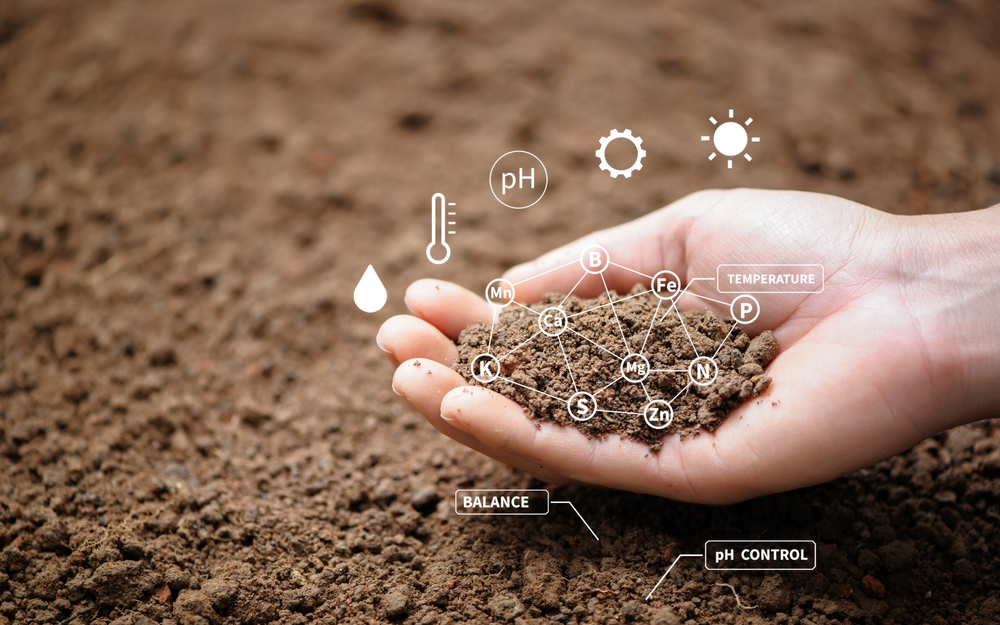
IoT-enabled sensors collect critical data on soil moisture, pH levels, and nutrient content. This real-time information helps farmers manage irrigation systems, optimize fertilizer use, and maintain soil health, ensuring crop productivity. Satellite imagery combined with IoT applications also aids in tracking soil erosion, moisture retention, and carbon sequestration.
5. Farm Equipment Monitoring
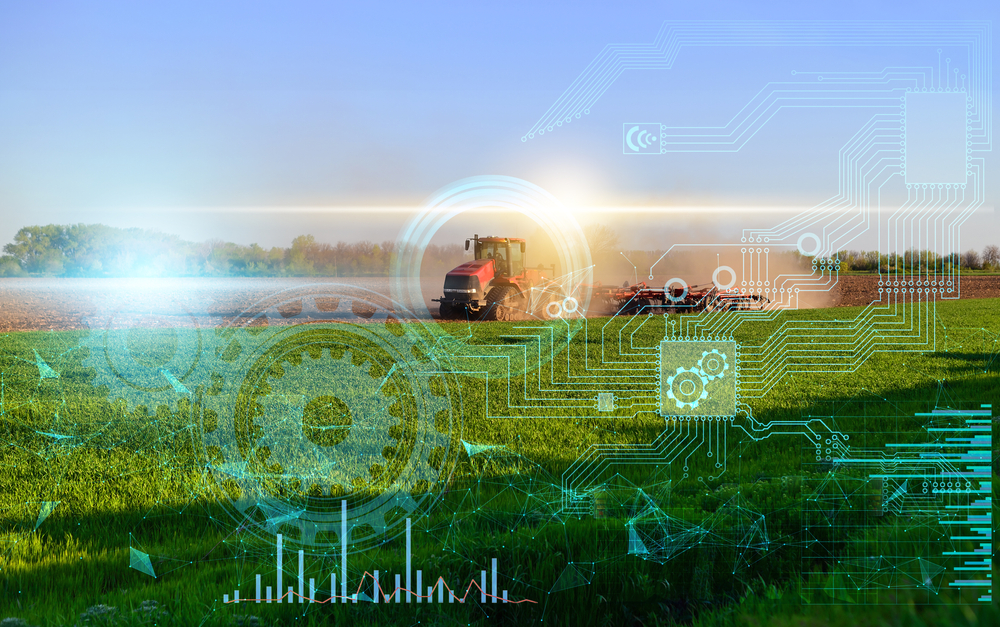
Managing farm equipment can be challenging, especially on large farms. IoT simplifies equipment management through real-time tracking of tractors, harvesters, and machinery. Sensors installed in farm vehicles can track their location, monitor fuel consumption, and provide maintenance alerts.
Sensors attached to tractors, harvesters, and other farming equipment provide real-time data on fuel consumption, operating hours, equipment location, and more.
This data can be transmitted to a central platform where it is analyzed to optimize equipment usage. Moreover, IoT-based predictive maintenance systems can alert farmers when machinery is likely to fail, reducing downtime and repair costs. This leads to more efficient farm operations, longer equipment lifespans, and cost savings.
- Predictive maintenance reduces unexpected breakdowns, saving farmers time and repair costs.
- Wireless networks transmit operational data to a central platform, providing insights into farm equipment efficiency.
What are the Most Popular Tools Used in Agriculture? – IoT Tools in Agriculture
When it comes to implementing IoT in agriculture, a wide range of tools are available that enhance farming practices, improve efficiency, and boost productivity. From programmable drones for livestock management to soil sensors offering real-time insights, these technologies are revolutionizing how farmers manage their operations.
However, each tool comes with its own set of advantages and challenges, making it essential to evaluate them carefully before integrating them into a farming ecosystem. The table below provides a comparison of some of the most popular IoT tools used in agriculture, highlighting their key benefits and potential drawbacks to help farmers make informed decisions:
| IoT Tool | Description | Pros | Cons |
| Agricultural Drones | Unmanned aerial vehicles (UAVs) used for crop monitoring, spraying, and surveying. | 1. Provides real-time data and imagery. 2. Cost-effective compared to satellite imagery. 3. Precision in livestock monitoring. | 1. Requires specialized skills to operate. 2. Initial setup costs can be high. 3. May be affected by weather conditions. |
| GPS-enabled Devices | Devices that use GPS technology to track equipment, livestock, or crop locations. | 1. Real-time location tracking for livestock and equipment. 2. Optimizes field operations (e.g., plowing, planting). 3. Increases efficiency in large-scale farming. | 1. Relies on good internet and GPS connectivity. 2. Can be expensive for smaller farms. 3. Battery life may be limited. |
| Soil Sensors | Sensors placed in the soil to measure moisture levels, temperature, and nutrient content. | 1. Provides precise, real-time soil condition data. 2. Helps optimize irrigation and fertilizer usage. 3. Reduces water waste and improves crop yields. | 1. Requires periodic maintenance and calibration. 2. May not be cost-effective for small farms. 3. Installation can be labor-intensive. |
| IoT Weather Stations | Sensors are placed in the soil to measure moisture levels, temperature, and nutrient content. | 1. Real-time, localized weather data. 2. Helps farmers adjust planting and harvesting schedules. 3. Improves crop protection from adverse weather. | 1. Installation and setup can be costly. 2. May not be necessary for smaller farms with access to public weather data. |
| Livestock Monitoring Sensors | Wireless sensors attached to livestock to monitor health, location, and movement. | 1. Provides real-time health data, reducing disease risks. 2. Reduces labor costs by enabling automated tracking. 3. Improves livestock welfare. | 1. Sensor accuracy can vary. 2. Can be costly for large herds. 3. Regular maintenance and battery replacement are required. |
| Automated Irrigation Systems | Wireless sensors are attached to livestock to monitor health, location, and movement. | 1. Optimizes water usage, reducing waste. 2. Increases crop yield and quality. 3. Can be controlled remotely. | 1. Initial setup and installation costs can be high. 2. May require complex integration with existing systems. 3. Dependent on consistent internet connectivity. |
Key Challenges in IoT in Agriculture
While IoT in agriculture offers numerous benefits like enhanced efficiency, precision, and resource management, it also faces several challenges that hinder its full potential. Addressing these obstacles is crucial for widespread adoption and successful integration into farming practices:
1. High Initial Costs
- Problem: The upfront investment for IoT technologies, such as drones, sensors, and automated machinery, can be prohibitively expensive for small and medium-sized farms.
- Solution: While costs may be a barrier, long-term savings through reduced labor, better resource management, and increased yields can offset the initial expenditure. Financing options and government subsidies for technological adoption can also help.
2. Data Security and Privacy Concerns
- Problem: IoT devices collect vast amounts of data, including sensitive farm data like yields, soil conditions, and even financial details. This opens the door to potential cybersecurity threats.
- Solution: Implementing advanced encryption, blockchain technology, and secure communication protocols can safeguard data from unauthorized access and tampering.
3. Connectivity Issues
- Problem: Many farms are located in rural areas where stable internet connectivity is challenging, limiting the effective use of IoT devices requiring constant communication.
- Solution: Expanding rural broadband networks, adopting satellite-based internet services, or using low-power wide-area networks (LPWAN) can improve connectivity in these areas.
4. Data Management and Overload
- Problem: The sheer volume of data generated by IoT devices can be overwhelming for farmers who lack the technical expertise to interpret and manage it effectively.
- Solution: User-friendly data management platforms and analytics tools can help farmers process and visualize data in actionable formats. AI and machine learning algorithms can also help turn raw data into meaningful insights.
5. Interoperability of Devices
- Problem: Different IoT devices and systems often operate on different platforms, making it difficult for farmers to integrate various tools into a unified system.
- Solution: Developing standardized protocols for IoT devices or using platforms that support multiple devices can ensure smooth interoperability between tools.
Future and Emerging Trends of IoT in Agriculture and Animal Farming
The future of IoT in agriculture promises even more innovation, with emerging trends focused on AI-driven automation, vertical farming, and blockchain integration. These technologies are set to revolutionize traditional farming methods, making them smarter, more sustainable, and efficient.
Take a closer look at trends of IoT in agriculture:
1. Increased Automation and Robotics
The rise of AI and IoT in agriculture will usher in a new era of automation, with robotic systems handling repetitive tasks such as planting, weeding, and harvesting. Autonomous tractors, robotic milkers, and smart irrigation systems are early examples of how IoT-powered automation is already reducing labor costs and increasing precision. Farmers can shift their focus from manual tasks to more strategic decision-making as automation scales, improving overall farm management.
2. AI-powered Decision-making with Predictive Analytics
Integrating AI tools in agriculture is one of the most exciting developments in IoT for agriculture. Farmers can make more informed decisions about crop health, resource allocation, and livestock management by harnessing predictive analytics, machine learning, and real-time data from IoT sensors.
AI-based sensors continuously collect and analyze data on variables such as soil moisture, weather patterns, and animal health, allowing farmers to predict issues like disease outbreaks or water shortages before they become critical. This predictive capacity enables better planning, optimized resource distribution, and increased yields.
3. Vertical Farming and Controlled Environments
IoT in agriculture also plays a significant role in the rise of vertical farming and controlled environment agriculture (CEA). Especially in urban settings, where space is limited, IoT sensors help monitor and control key environmental factors such as temperature, humidity, light, and nutrient levels.
This results in consistent crop production with minimal waste and water usage. These smart systems are bringing new trends in agriculture. They are pivotal in making agriculture more sustainable by reducing resource consumption and increasing output in smaller areas.
4. Integration of Blockchain for Transparency and Traceability
The combination of IoT and blockchain technology in agriculture revolutionizes transparency and traceability within the food supply chain. IoT devices provide real-time data on every stage of food production, from soil health and crop quality to animal welfare.
Blockchain further enhances this by securely storing this data, offering consumers instant access to detailed information about their food’s origin, sustainability practices, and safety standards. This integration builds trust between consumers and producers while helping farmers meet regulatory and market demands for more transparent food sourcing.
5. Focus on Animal Welfare Through IoT Sensors
As IoT in agriculture advances, animal welfare will become more measurable and manageable through sensors that track vital signs, activity levels, and stress indicators. These insights allow farmers to tailor care for individual animals, reducing disease risks and improving overall livestock health.
By monitoring environmental conditions like temperature and air quality in real time, farmers can also enhance animal living conditions, leading to healthier livestock and higher-quality products. IoT-driven waste management systems also automate manure monitoring and disposal, promoting cleaner, more sustainable farm environments.
6. Enhanced Precision Agriculture
IoT technology advances precision agriculture by delivering more accurate, real-time data on plant and soil conditions. Farmers can now deploy sensors that track soil health, pest activity, and irrigation needs, allowing for hyper-targeted interventions.
This data-driven approach reduces the need for excessive pesticide and fertilizer use, minimizing environmental impact and maximizing crop yield. As precision agriculture becomes more sophisticated, farmers can expect to achieve greater efficiency and sustainability.
7. Smart Greenhouses
Another emerging trend is the adoption of IoT in smart greenhouses. These controlled environments use IoT sensors to adjust lighting, temperature, and irrigation in real time, optimizing plant growth conditions.
Smart greenhouses also rely on data collected from external weather stations and sensors to automate responses to environmental changes, ensuring that crops are grown under optimal conditions at all times. The seamless integration of IoT in agriculture, especially in smart greenhouses, enhances production and reduces the carbon footprint.
Conclusion
The integration of IoT in agriculture is transforming traditional farming methods into smarter, more efficient systems capable of feeding the world’s growing population while safeguarding the environment. From precision farming and livestock monitoring to advanced robotics and blockchain solutions, IoT offers limitless potential for sustainable agriculture.
Want to revolutionize your farm with IoT solutions? Contact us today to learn how our custom software can help you optimize operations and improve productivity!
FAQs
What Are the Challenges of IoT in Agriculture?
The challenges of IoT in agriculture include internet connectivity issues on farms, cloud connection, and hardware costs.
What Is the Future Scope of IoT in Agriculture?
IoT will speed up the productivity in agriculture through automation, and data collection of agricultural activities will become a lot easier when IoT is integrated into your systems.
Do You Know the Importance of IoT in the Agriculture Market?
With the advancement in technology, food compliance software is expected to enhance IoT, accelerating high productivity in the agriculture industry to meet the daily necessities of food for the growing population.

